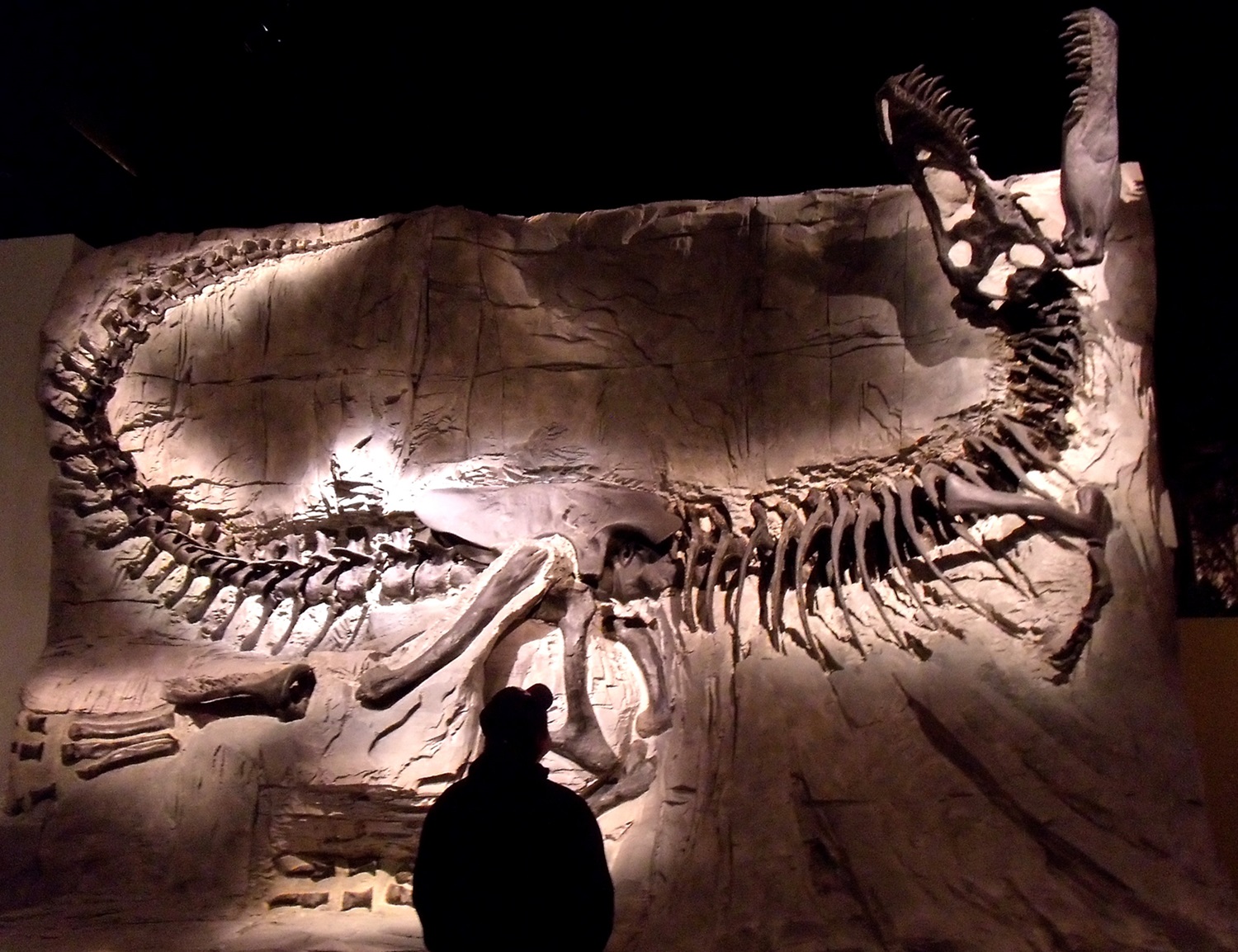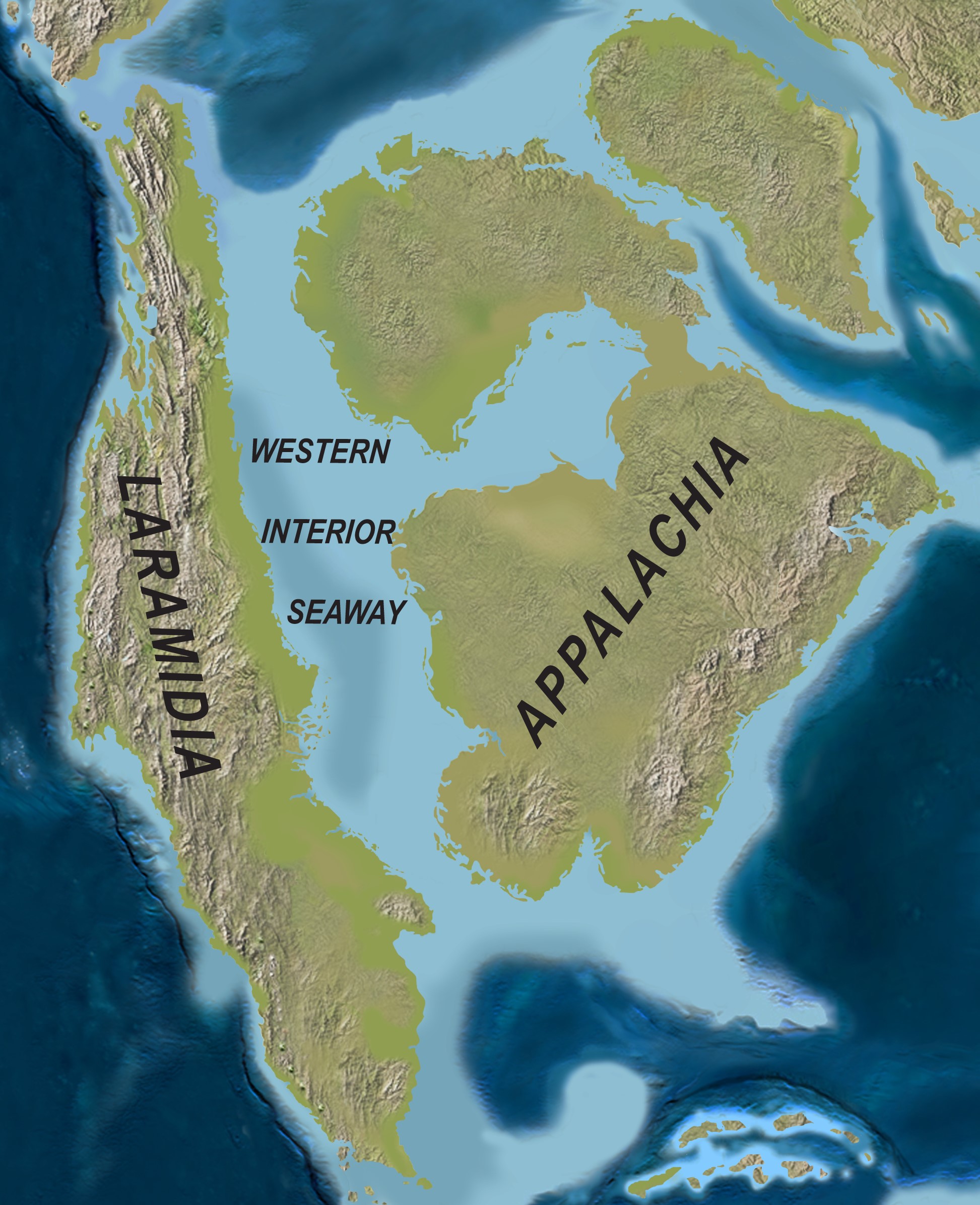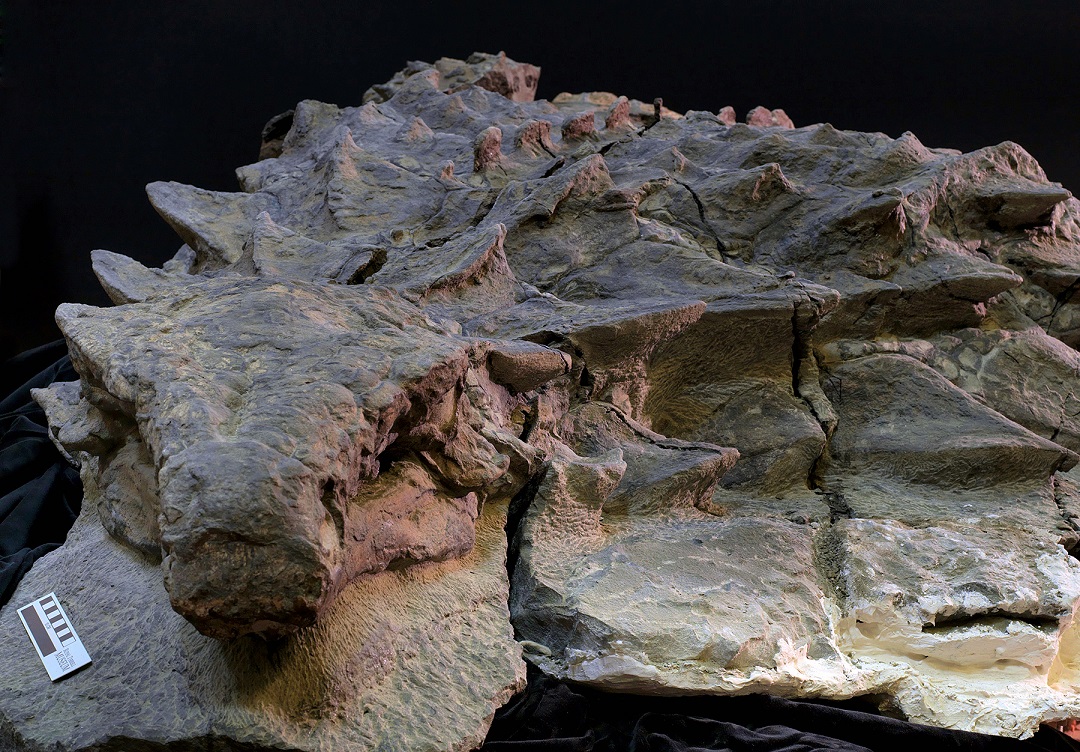Ankylosaurus is a genus of large, armoured dinosaur. It was one of the last non-avian dinosaurs, having lived at the same time as Tyrannosaurus rex, Triceratops and Edmontosaurus annectens at the very end of the Age of Dinosaurs, between 68 and 66 million years ago. Ankylosaurus lived in the northwestern interior of North America, from southcentral Alberta and southern Saskatchewan in the north to Montana, South Dakota and Wyoming in the south. It was the largest representative of a group of herbivorous, armoured dinosaurs called “ankylosaurs," including relatives like Borealopelta, Edmontonia and Euoplocephalus. No complete skeleton of Ankylosaurus has ever been found, but two skulls, ribs, vertebrae, limb bones, armour and one tail club have been discovered.
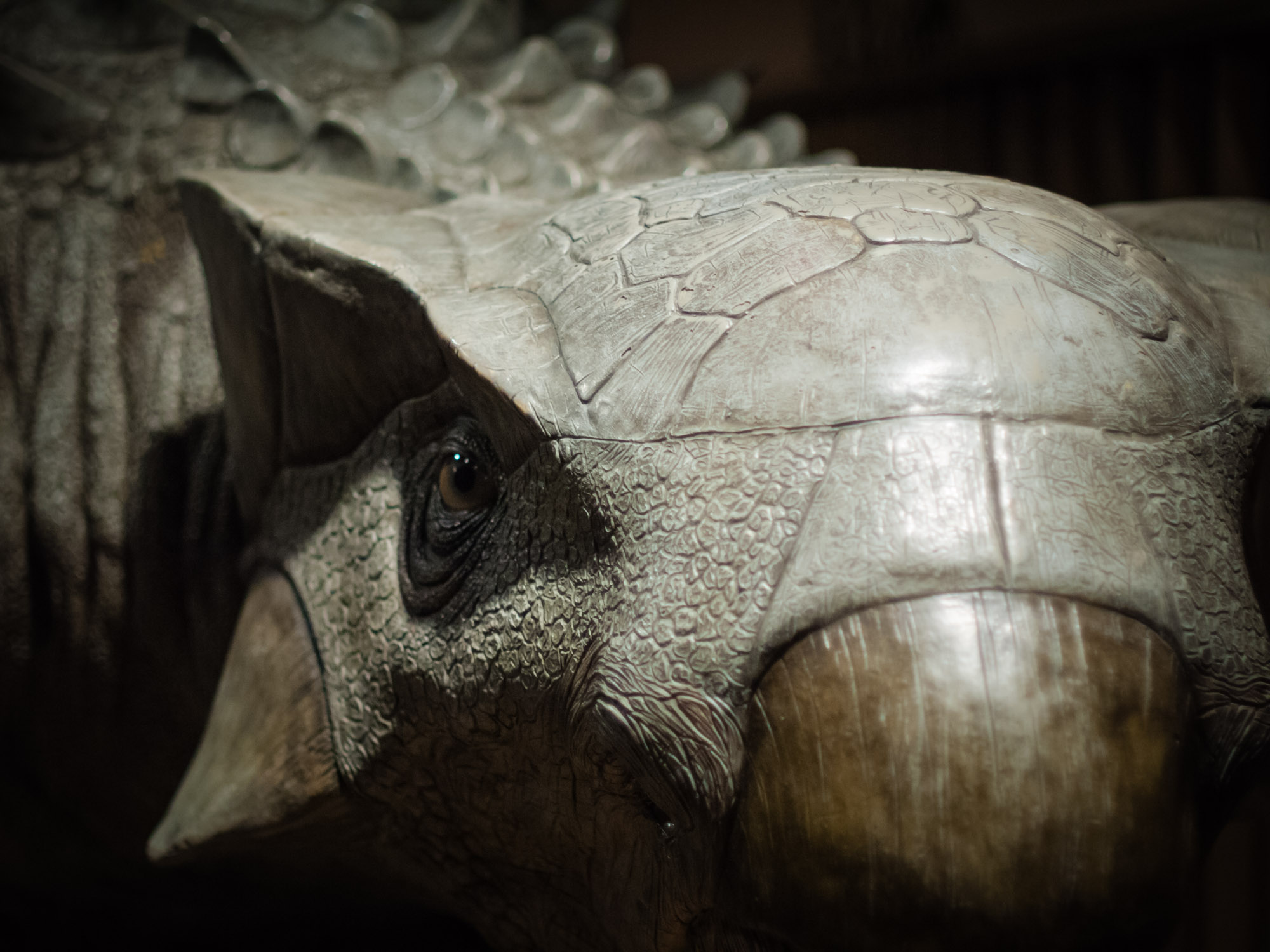
Description
Ankylosaurus was the largest representative of a group of herbivorous, armoured dinosaurs belonging to the Ankylosauria infraorder, commonly referred to as “ankylosaurs.” Ankylosaurs' necks, backs, flanks and tails were covered by spikes and pieces of bony armour called “osteoderms” embedded in the skin. On the head, osteoderms fused directly onto the skull to form “horns,” and the skull’s bones remodelled themselves to form scale-like ornamentation. These horns likely played a role in courtship or individual identification and may have been covered by a keratinous sheath or colourful scales in life. Ankylosaurs are classified into two families. The ankylosaurids had a rounded snout, forward-facing nostrils and a club at the end of their tail. The nodosaurids had an elongated snout, side-facing nostrils, large spikes sticking out of their shoulders and lacked a tail club. Ankylosaurus was a member of the ankylosaurid family, but its nostrils were located on the side of the snout and were directed downward and outward.
Ankylosaurus reached up to 8 m in length — longer than a short bus — and may have weighed up to 8 tonnes, more than a male African elephant. It walked slowly on four powerful legs. Its forelimbs, shorter than the hindlimbs, were very robust and powerful — possibly bearing most of the animal’s weight. Its hands likely had four fingers, and its feet three toes, each digit bearing a hoof. The last seven tail vertebrae were fused together and strengthened by ossified tendons to support a large tail club. The tail club had a roughly circular shape when seen from above, measured 60 cm long and 49 cm wide, and was formed by two large osteoderms on each side of the tail and two smaller ones at the tip of the tail. The neck of Ankylosaurus was protected by large osteoderms forming two half-rings, similar to yokes. The back of the animal was covered by longitudinal and transverse rows of large, flat osteoderms with a low keel on one side. Smaller osteoderms with a pronounced midline keel filled the space between larger ones.
Ankylosaurus had 34–35 teeth in its upper jaw and 35–36 teeth in its lower jaw. They were small, approximately 6 mm wide by 9 mm high, leaf-shaped, serrated and laterally compressed to puncture and slice leaves. The front of its jaws lacked teeth and was covered by a keratinous beak.

Range and Habitat
Very few specimens of Ankylosaurus are known, and all are highly incomplete skeletons. Specimens have been found in the northwestern interior of North America, specifically in southcentral Alberta, southern Saskatchewan, Montana, South Dakota and Wyoming. Ankylosaurus lived in temperate/subtropical humid forests and deltas as the Western Interior Seaway was retreating to the south due to dropping sea levels, although brackish to marine incursions occasionally occurred as far north as North Dakota.
Reproduction and Development
Although it is presumed that Ankylosaurus laid eggs, no eggs or eggshell fragments have been discovered. This could be because ankylosaurs nested in environments where it was unlikely their eggs would be buried and eventually fossilized. However, a recent study suggested that it could be because many dinosaurs laid soft-shelled eggs, like many lizards and turtles. Soft-shelled eggs are less likely to fossilize than hard-shelled eggs.
Skeletons of baby Ankylosaurus have never been found. However, a group of 30 young ankylosaurids of similar size (1–2 m) have been found buried together in Mongolia, indicating that young ankylosaurids probably lived in herds of similar-aged individuals apart from adults and younger animals. Only two baby Ankylosaurus teeth have been discovered. The teeth are tiny, only 3.3 mm long, and are heavily worn, suggesting youngsters chewed their food extensively.
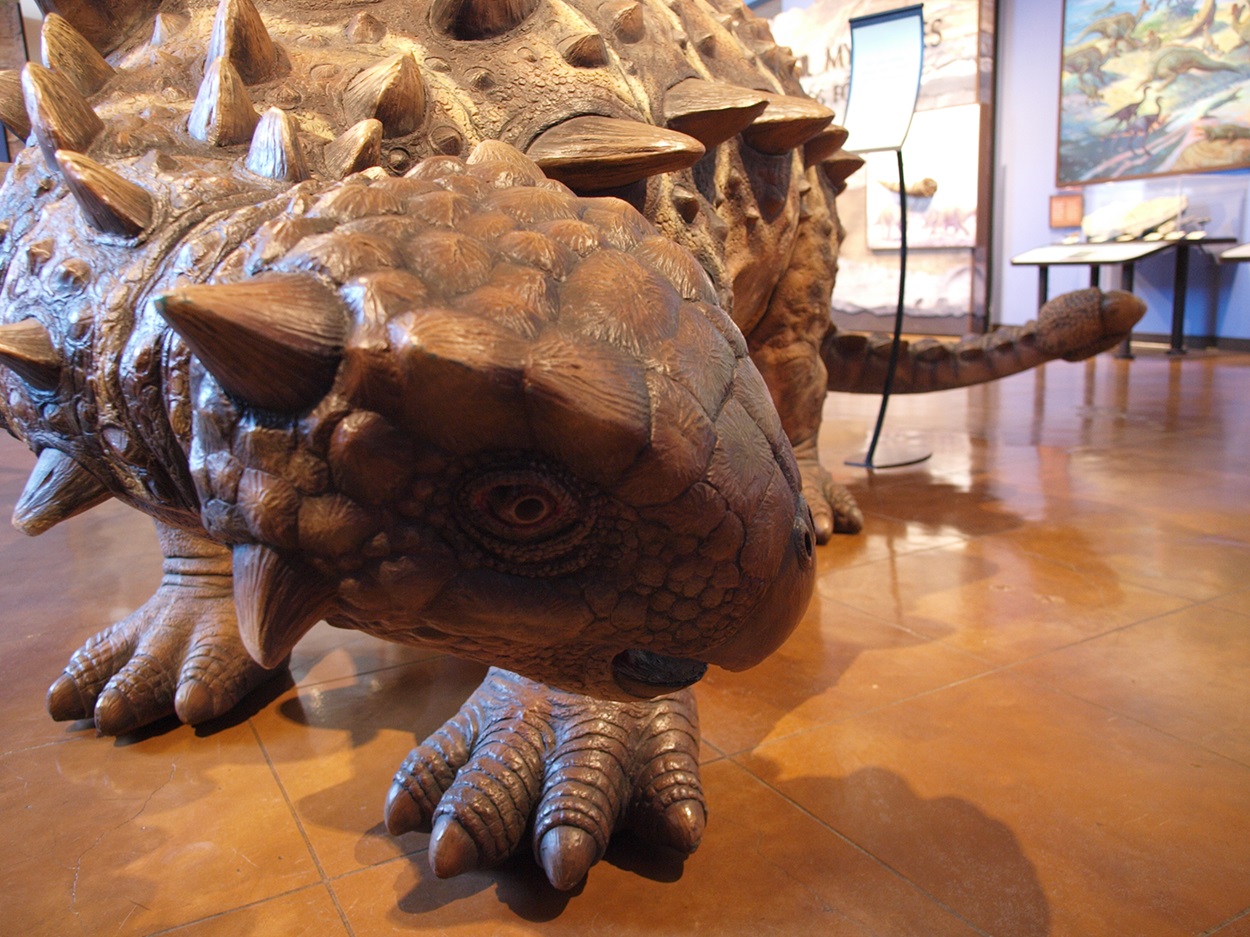
Diet
With its wide muzzle and low-hung head, Ankylosaurus browsed on fibrous and woody plants, ferns, tough leaves and low shrubs' pulpy fruits. Adults did not chew their food extensively and may have used a long, powerful tongue to pluck and swallow vegetation. With its nostrils located farther back on its snout and its powerful forelimbs, Ankylosaurus may also have scratched the ground to supplement its diet with roots, tubers and maybe even insects.
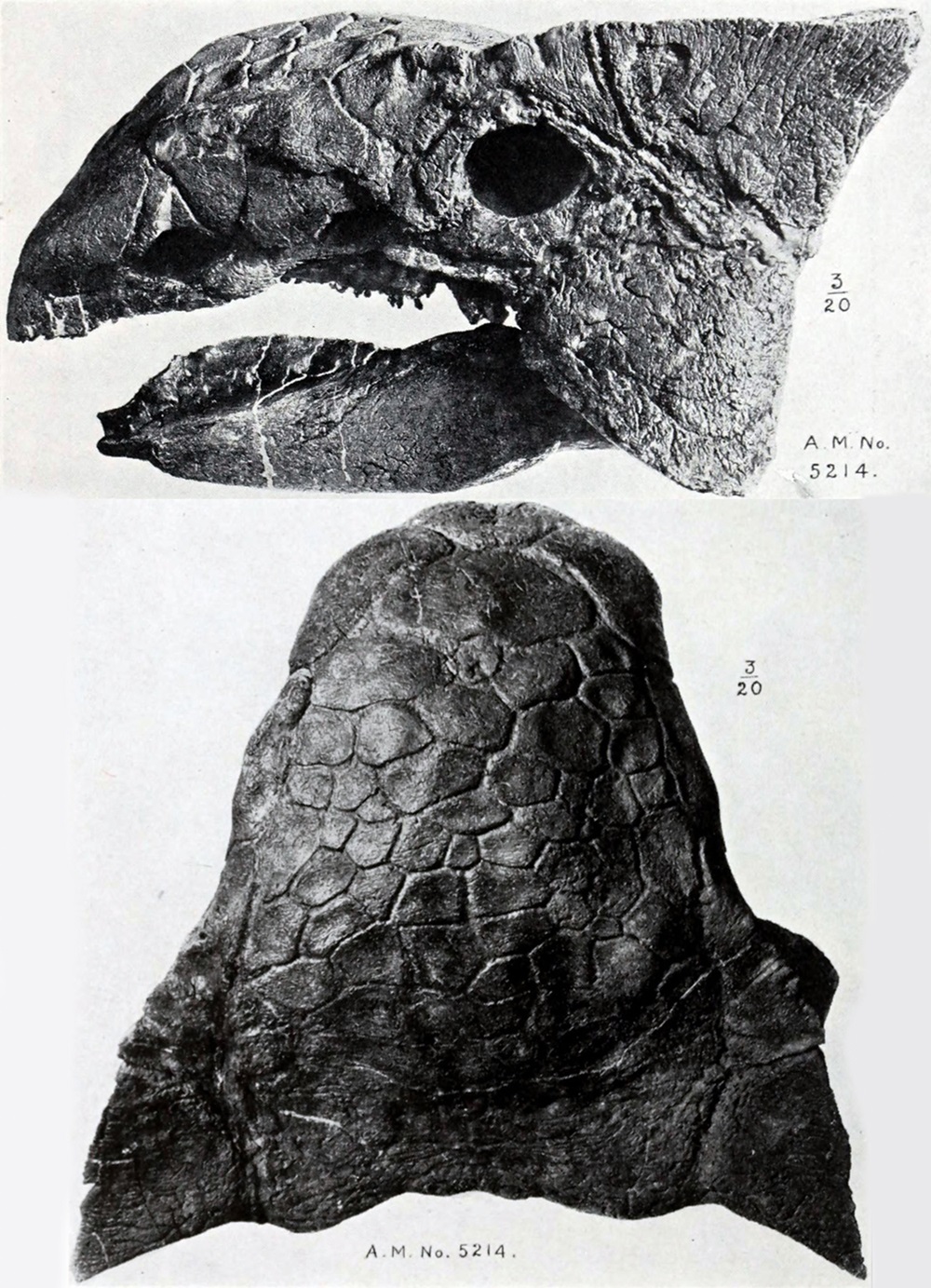
Behaviour
Very little is known about the behaviour of Ankylosaurus. In ankylosaurids, the size of the tail club increased as the animal grew. Studies have shown that young ankylosaurids could have swung their tail club with sufficient force to inflict soft tissue injuries, whereas adults could have shattered bones. Although ankylosaurids could have used their tail clubs for defence against large predators, like tyrannosaurs, broken and healed osteoderms observed on the flanks of an ankylosaurid skeleton suggest their clubs were primarily used for ritualized combat with members of their own species to defend their territory or access mates. Fossil trackways from Grande Cache in northern Alberta reveal that adult ankylosaurs often traveled in small groups.
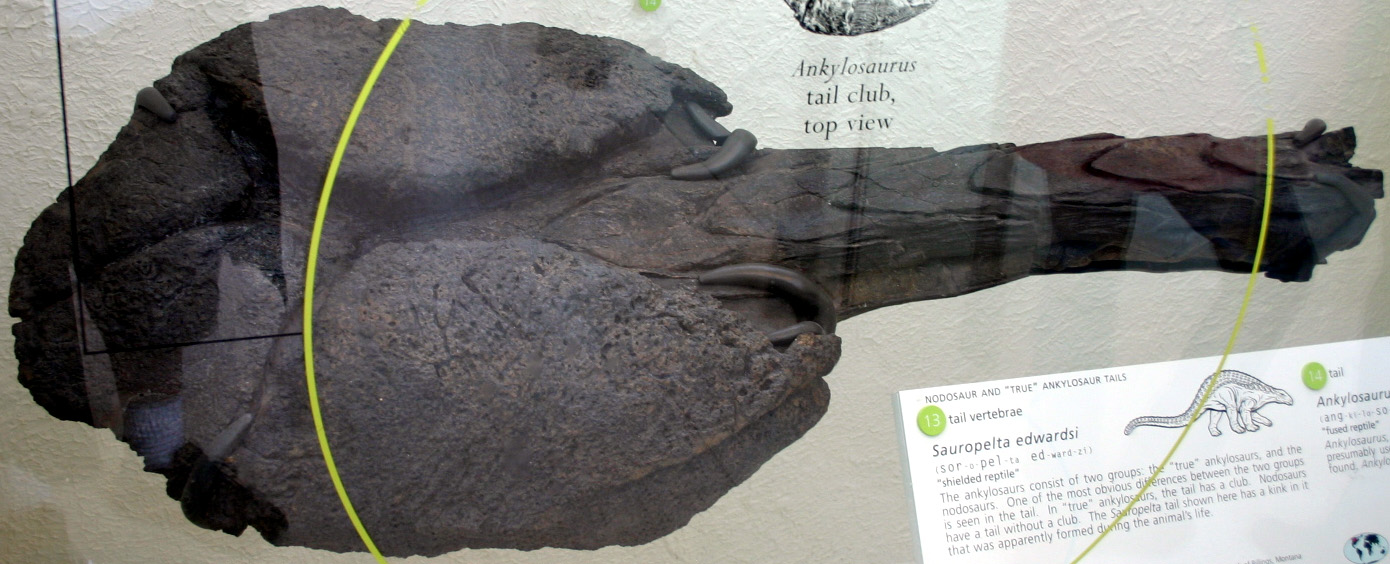
Discovery
Ankylosaurus is one of the rarest ankylosaurs, known only from a handful of specimens. The first Ankylosaurus remains, a collection of 77 osteoderms, were discovered in Montana by Barnum Brown of the American Museum of Natural History in 1900. Because they were found with a T. rex skeleton, Brown initially thought the osteoderms belonged to the large tyrannosaur. It wasn’t until 1906, after he discovered a partial skull, vertebrae, shoulder blade, ribs and osteoderms in Montana, that Brown realized the osteoderms belonged to a new type of dinosaur, which he named Ankylosaurus in 1908. Later, in 1910, Brown discovered the most complete Ankylosaurus skeleton ever found, consisting of a complete skull, mandibles, limb bones, osteoderms and the only known tail club for the genus, along the banks of the Red Deer River north of Drumheller, Alberta. It wasn’t until 1947 that another specimen of Ankylosaurus, the skull and mandibles of a very large individual, was discovered by Charles M. Sternberg of the National Museums of Canada (now the Canadian Museum of Nature) approximately 1 km from the 1906 specimen. Since then, only osteoderms, teeth and vertebrae have been found. Ankylosaurus osteoderms were discovered south of Swift Current, Saskatchewan, in 1999.
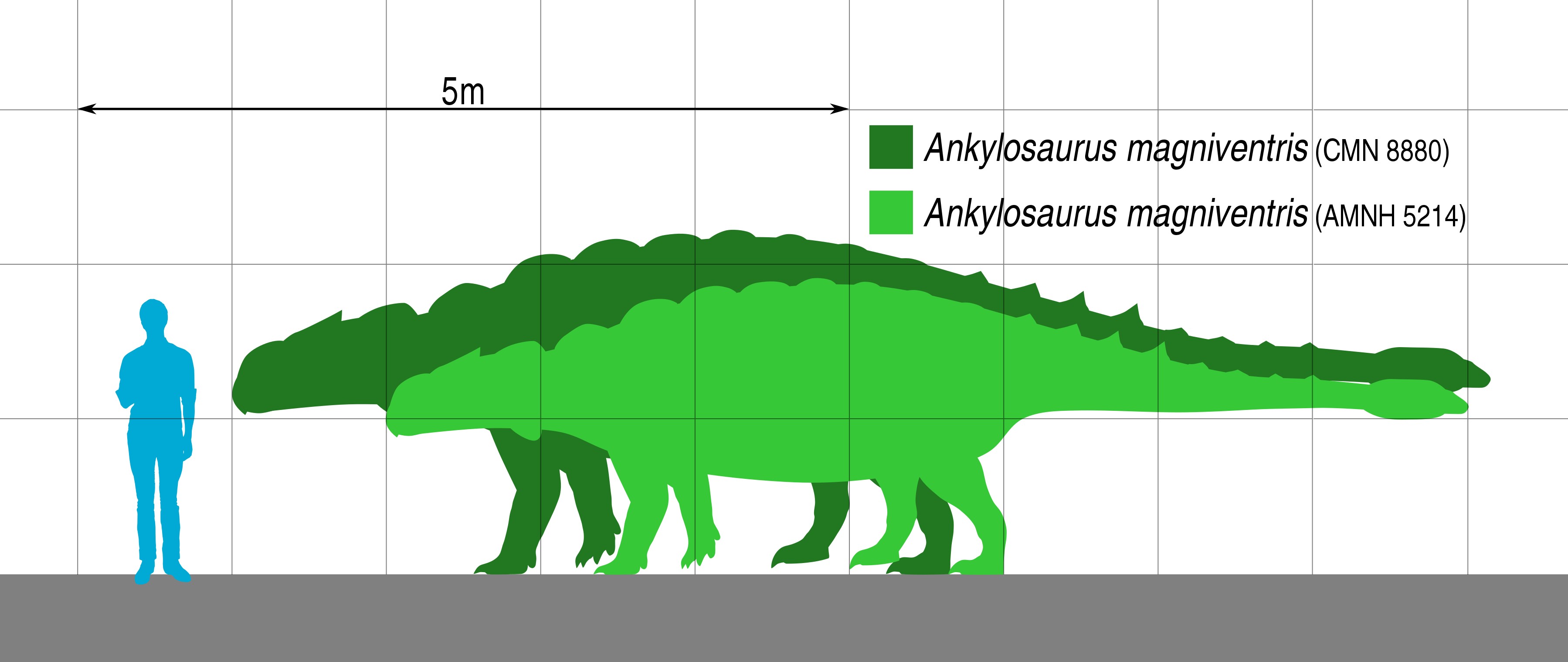

 Share on Facebook
Share on Facebook Share on X
Share on X Share by Email
Share by Email Share on Google Classroom
Share on Google Classroom
